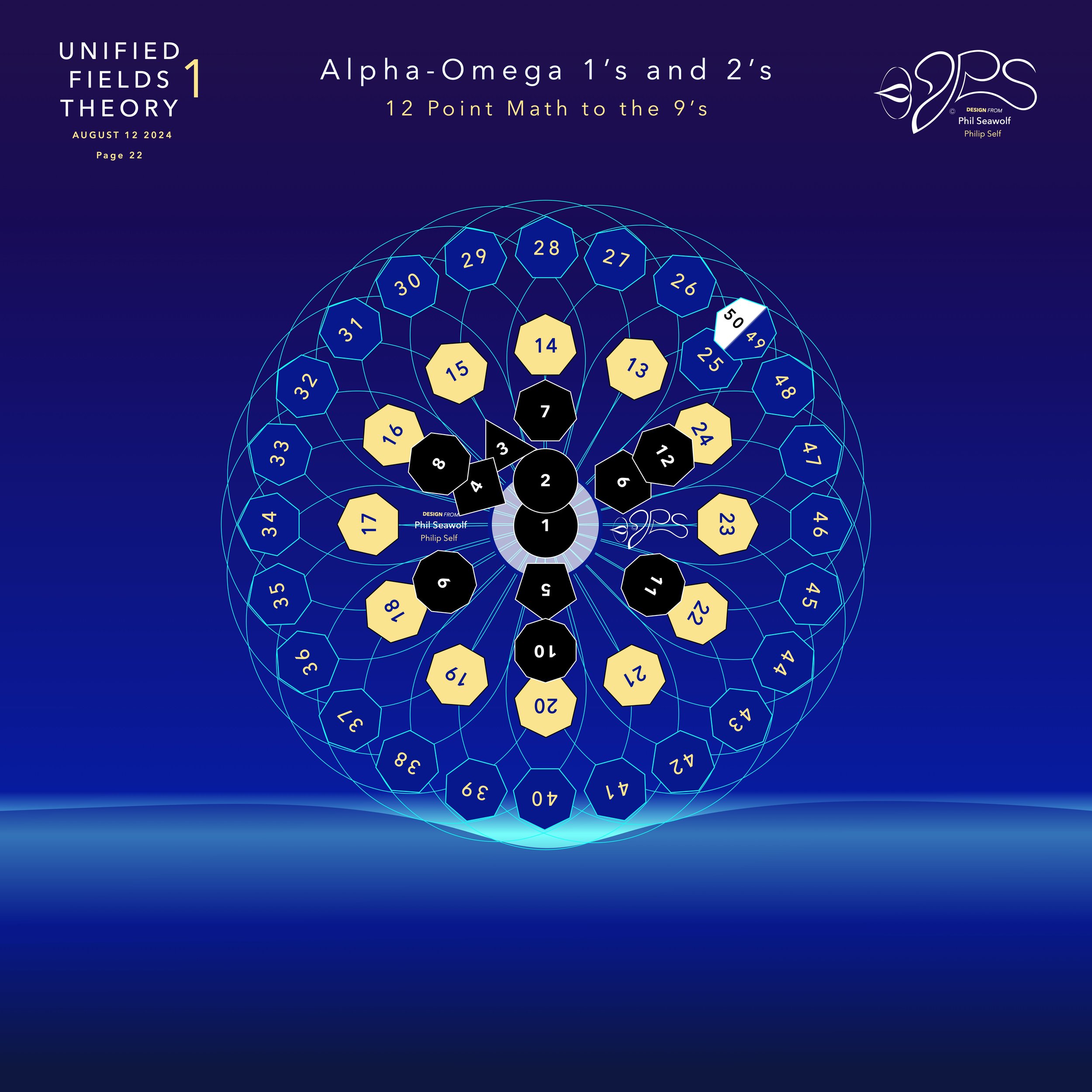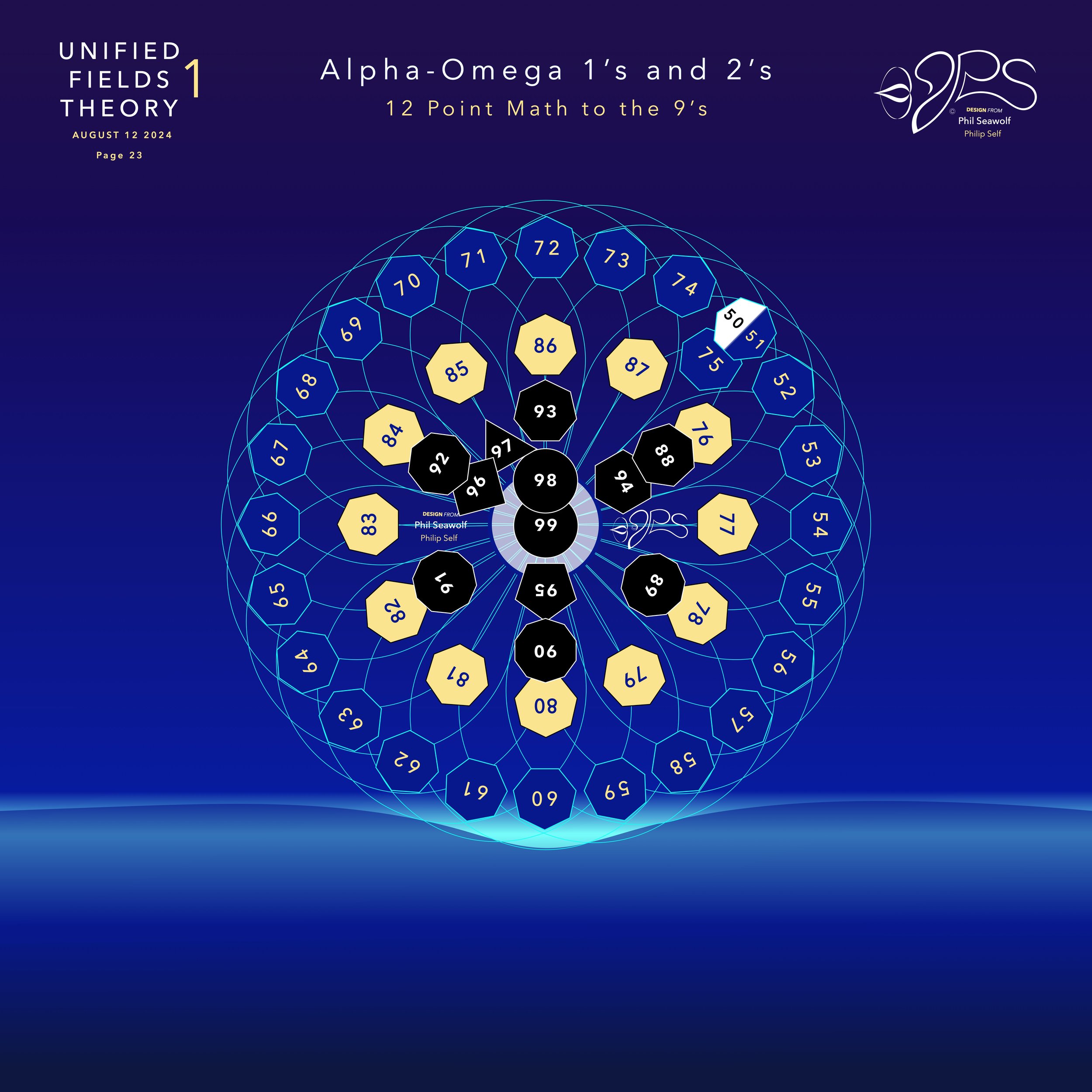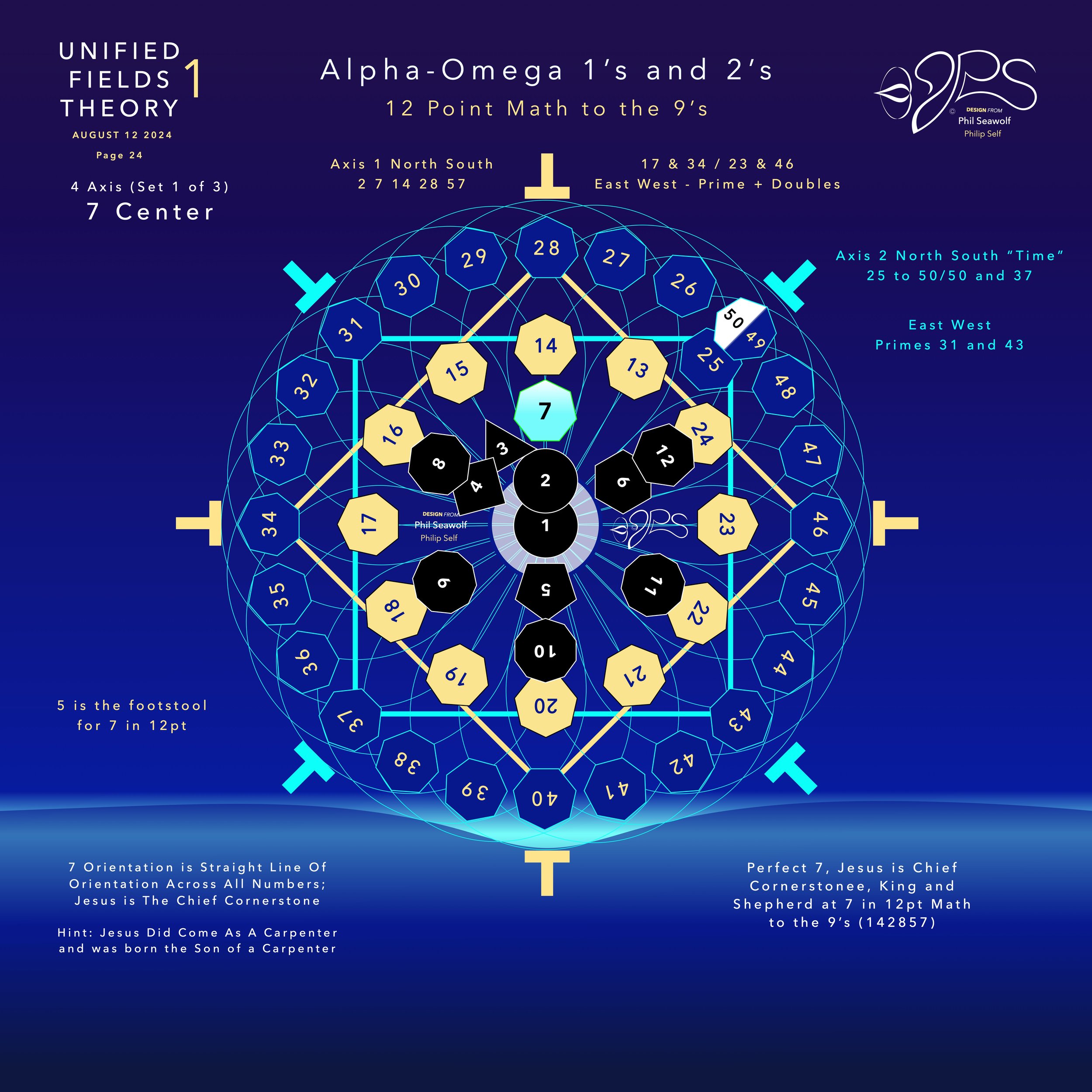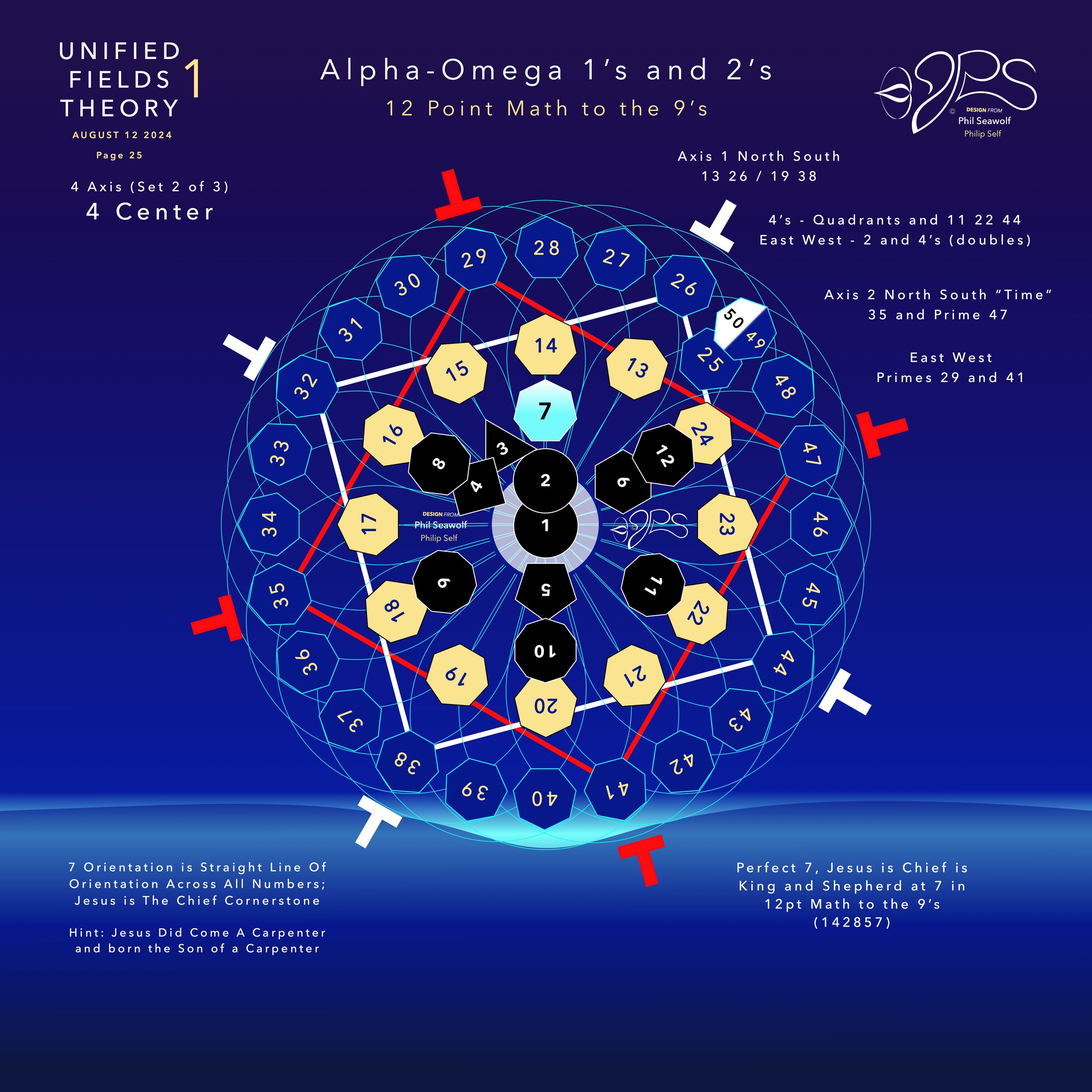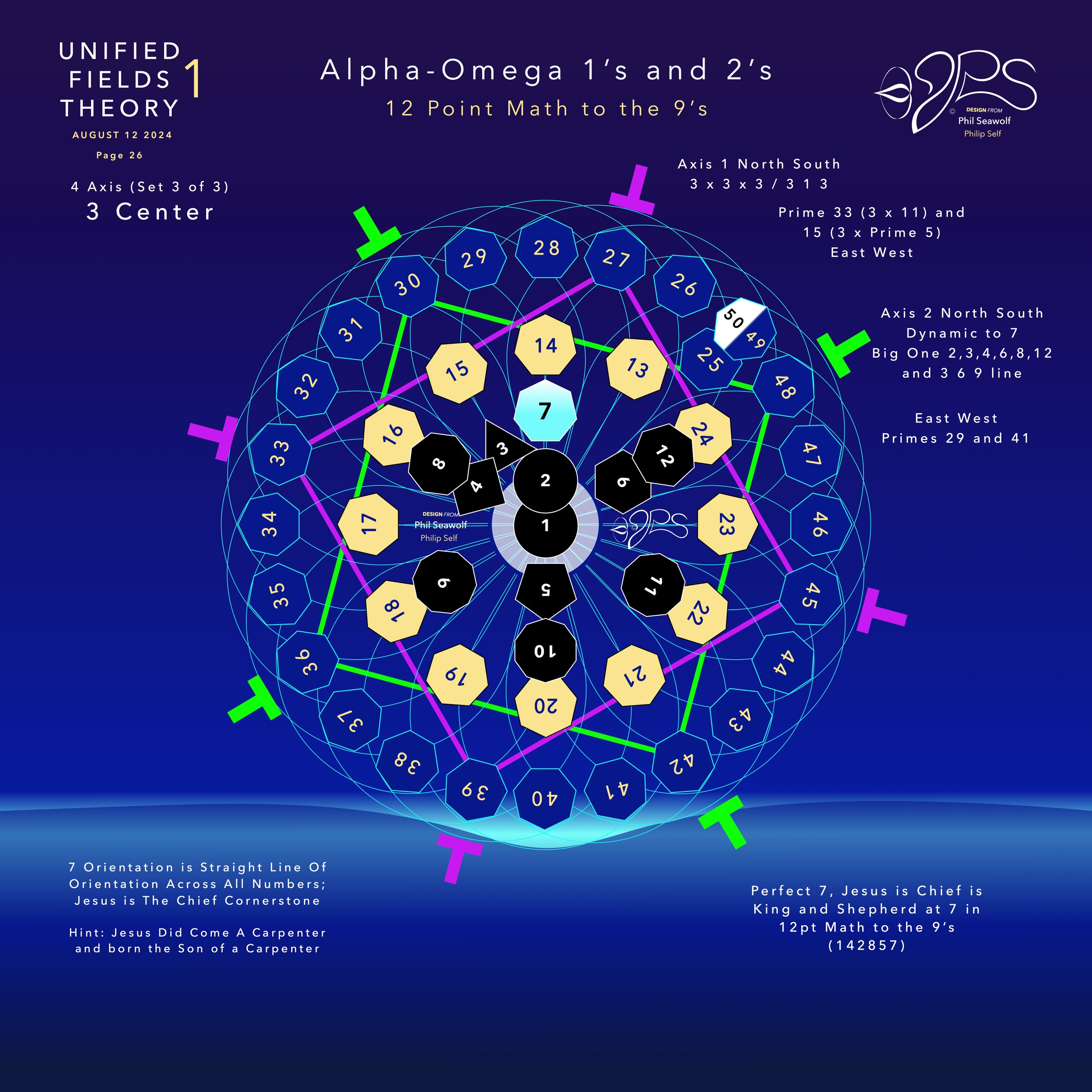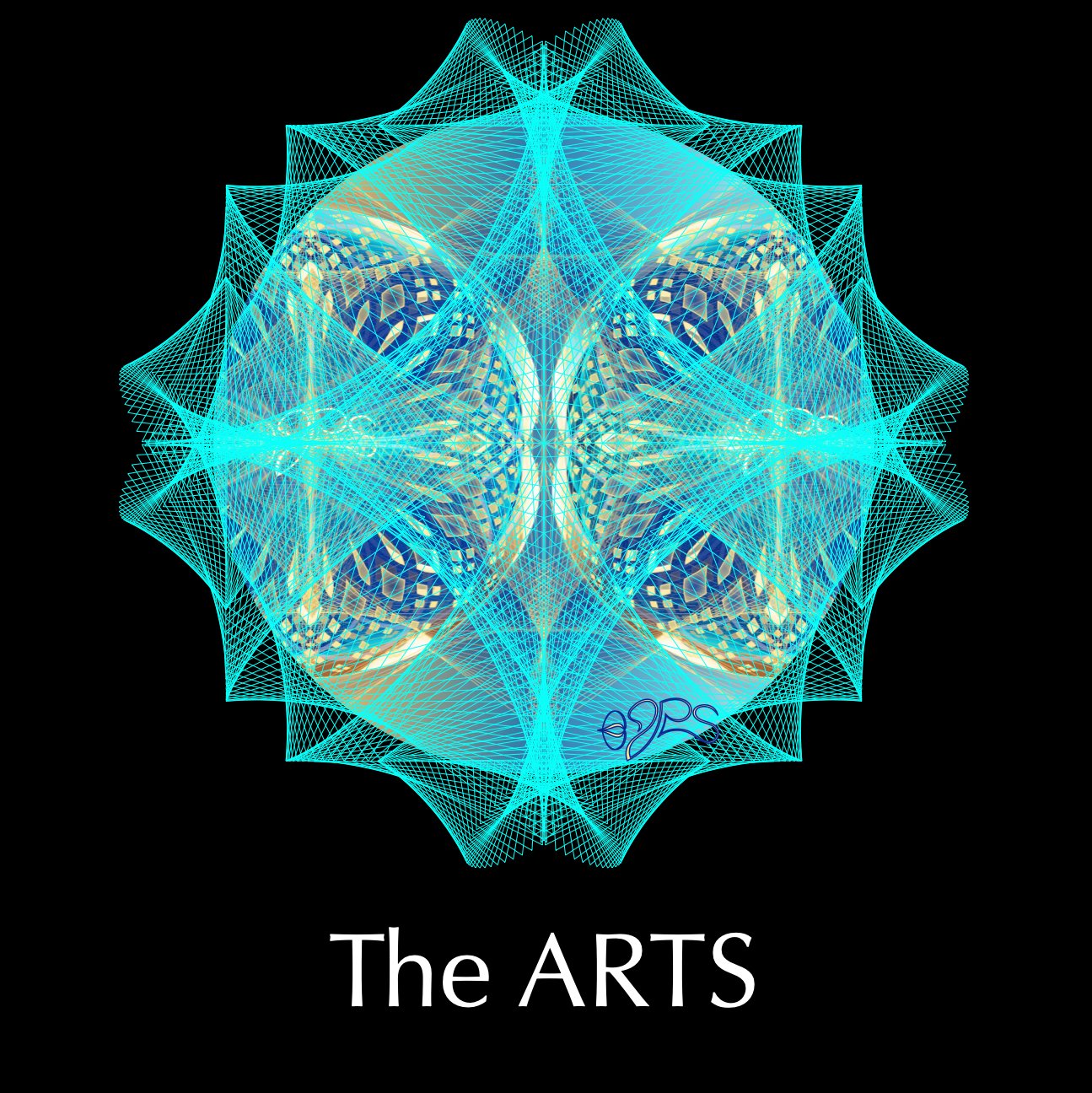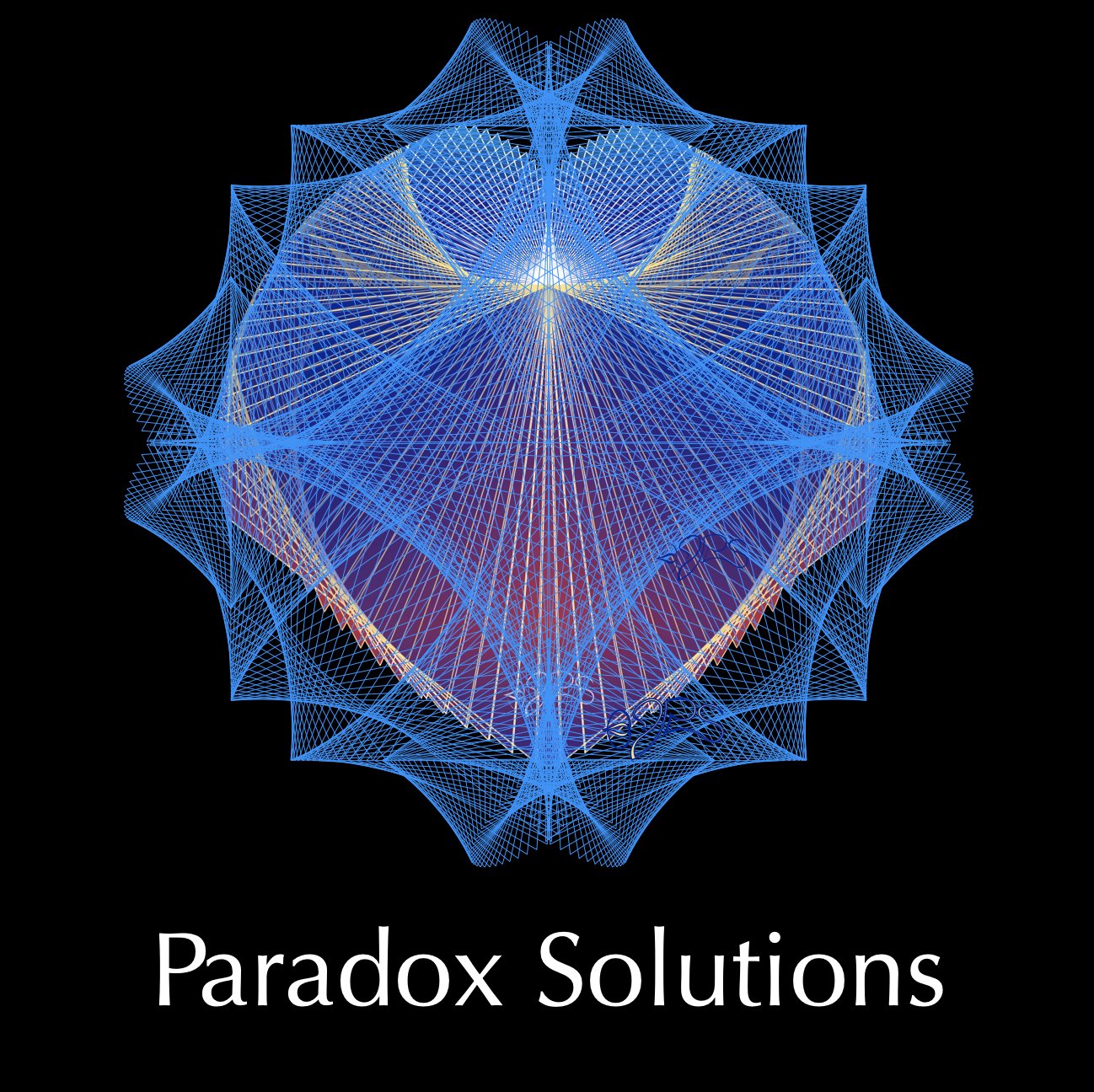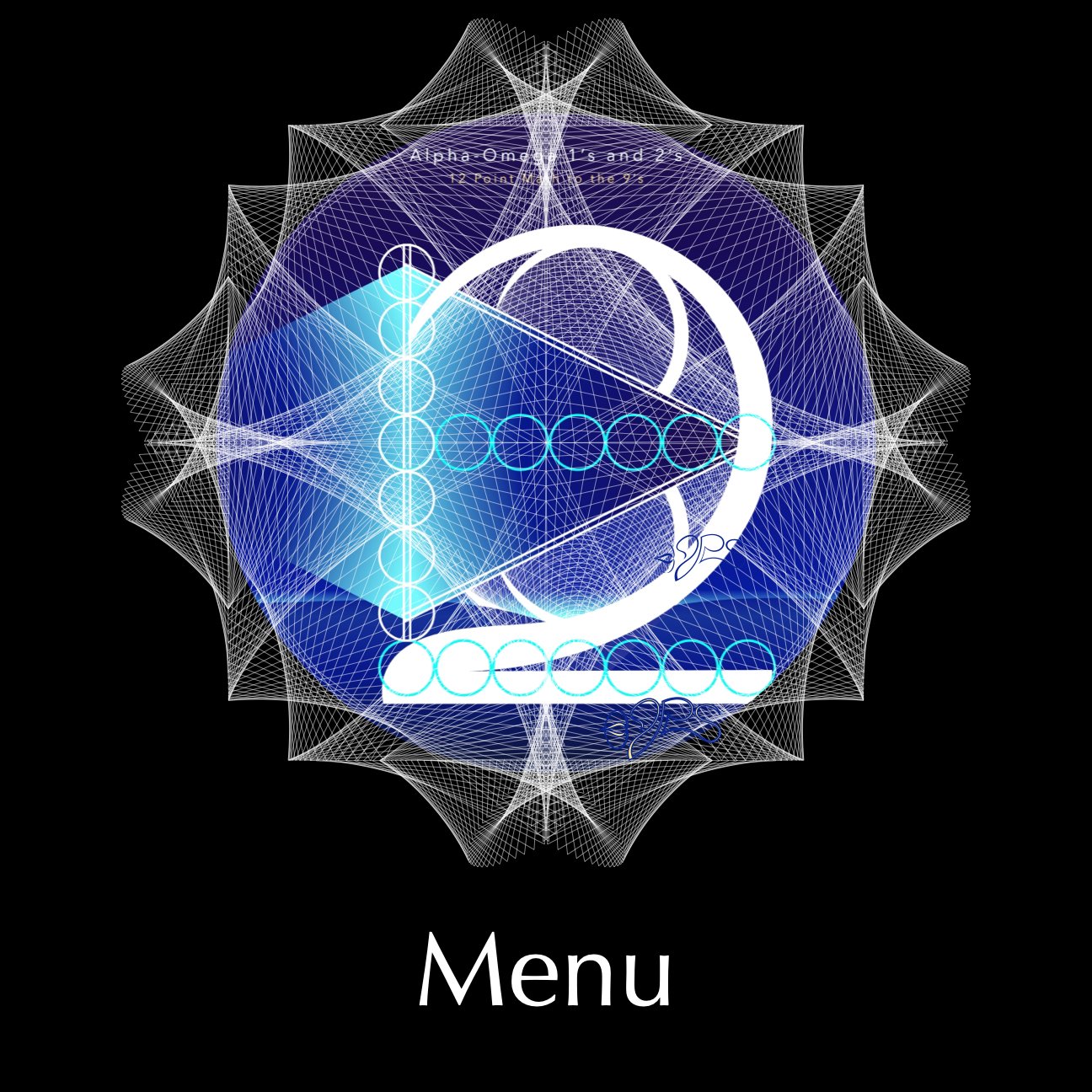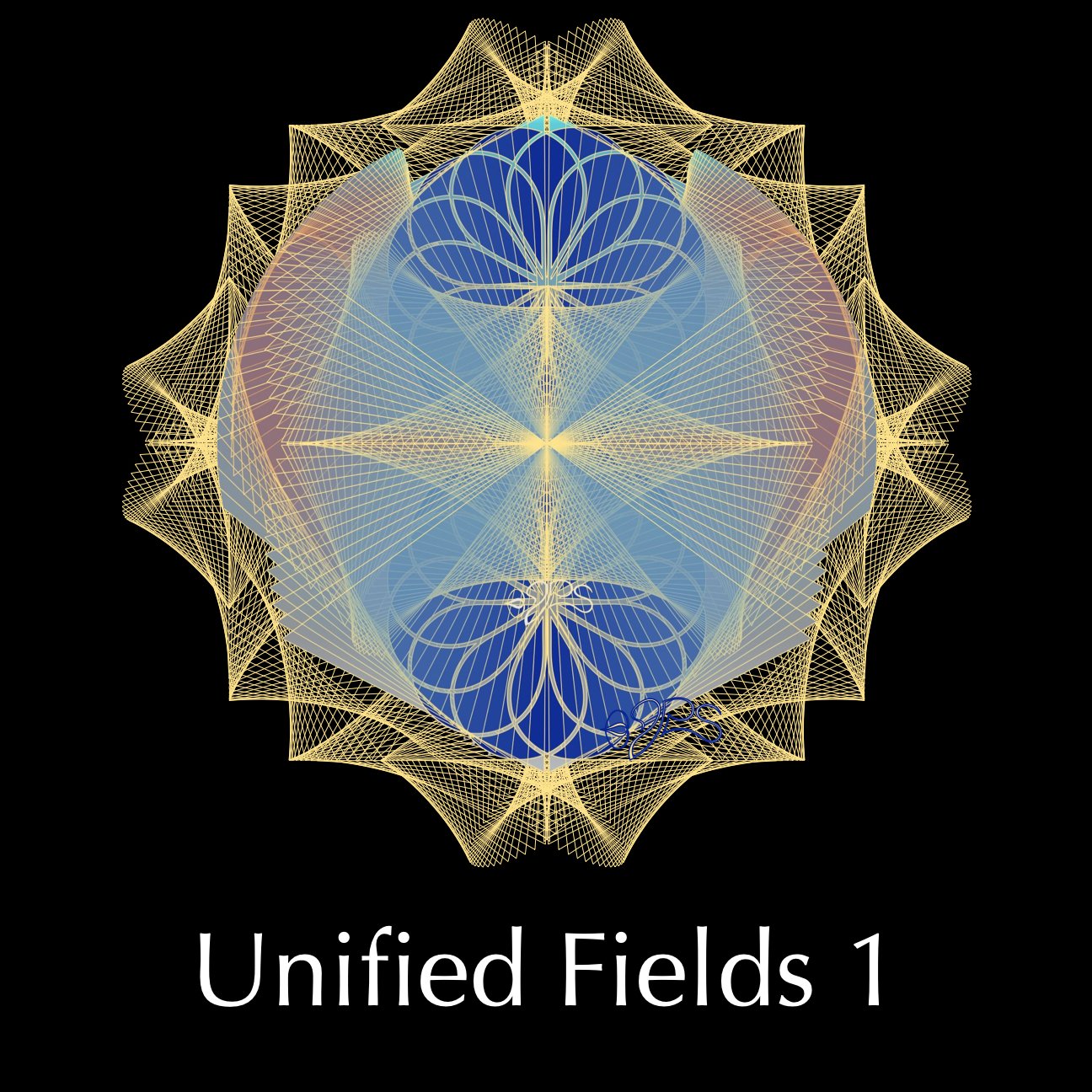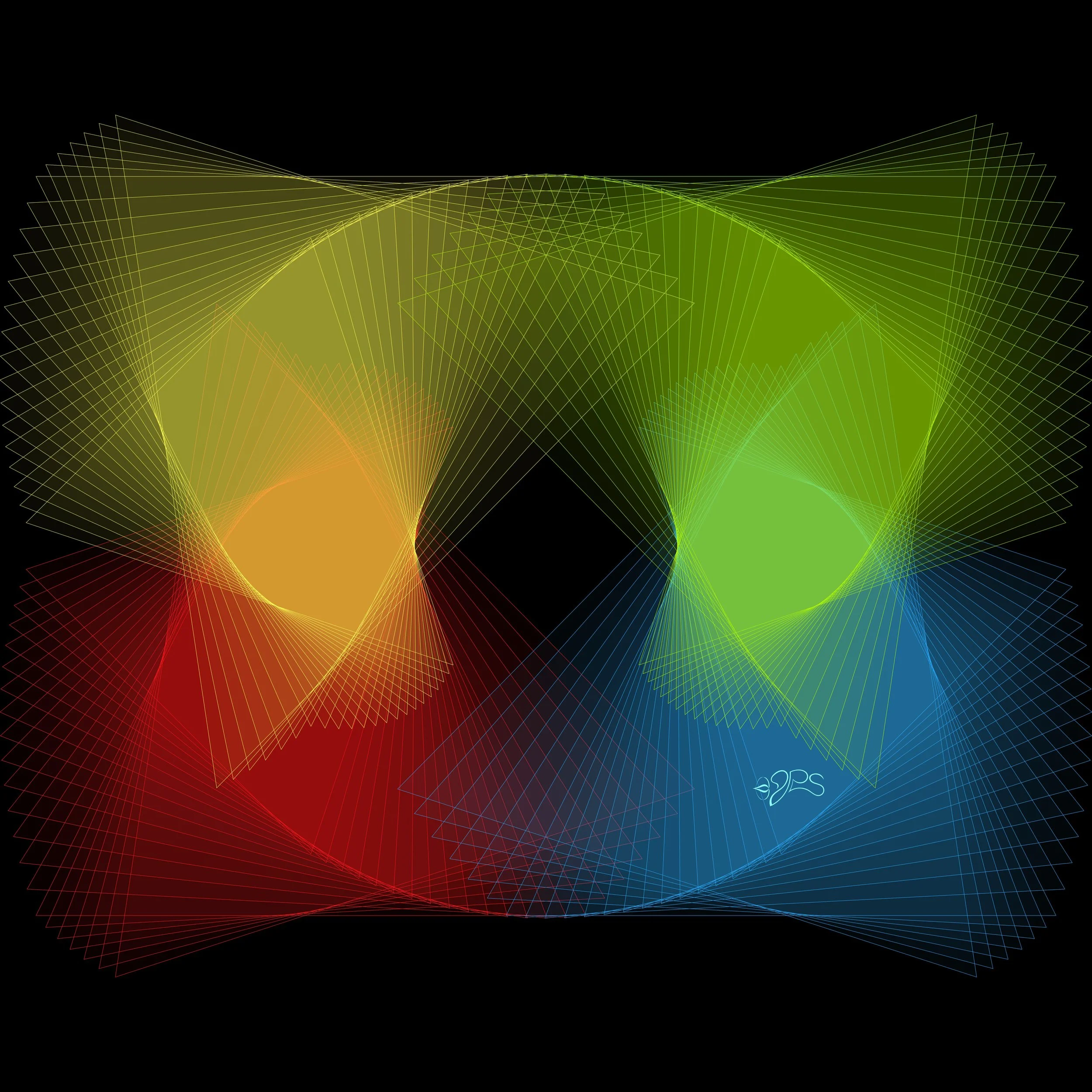
Photovoltaic Efficiency in UFT1
-
Phil Seawolf / Philip Self
*NOTE: All images, artwork and audio are made on my Mac with Pages, Garage Band Etc.. I did my best. My voice is my own and I have fun with accent and personality. Please forgive me. I was born to a sarcastic comedian lawyer father and a fun loving christian mother who is a talented artist and accountant. Go figure. We try and fire on both sides of the brain in our family. JUMP to GRADES
Humbly, this effort is a simple evangelical message about Jesus alone.
Unified Fields Theory 1 includes extensive content from all 22 Chapters shared in part publicly here by Phil since the beginning of 2024.
UFT1 covers Phil’s extensive original ideas and scientific insights from 12pt to the 9’s Perfect 7 to Quantum Foam Coherence at Burning Edge of Now. 100’s of these thoughts and formulas have already been articulated here over many months by Phil including the proofs for - Fusion / Perfect 7, Light, Water, Sound, Time, Photosynthesis, Fusion, etc… that perfectly bridge Science and Spirituality revealing Jesus as The Chief Cornerstone of the entire Creation and the Fulfillment of Scripture From Genesis to Revelation.
Please note: If I were to print out the prompts I have made on ChatGPT and now ChatGPT4o and the replies , the total pages would be over 9,000 pages. My prompts alone are over 700 printed pages.
Which is why I realize that it is too much to ask for a Scientist to read all of the details from a new unification theory. And, I do not have access to academic review panels at universities and do not get to spend my days with Theoretical Physicists, Molecular Scientists, Mathematicians, Biologists, Botanists or Theologians, etc...
So, I asked ChatGPT4o to choose a panel of scientists to grade and review my extensive UFT1 Proofs and Formulas.
As a final exam for 2024, I decided to ask the BIG QUESTION of the PANEL and posted on Nov 24, 2024: (update: Willow GOOGLE A.I. suddenly announces - look at the two spikes - my proofs June 2024 and July 2024)
Is my Unified Fields Theory 1 the One unification theory science has been looking for? Does it meet or exceed the expectations for a unification theory? Results were graded A+++.

Highlighted Proof UFT1 Graded >>> Perfect 7 / FUSION <<<
Photovoltaic Efficiency Enhanced by Unified Fields Theory 1
Phil Seawolf (Philip Self)
November 3rd, 2024
Context and Importance
Photovoltaics (PV), the process by which solar cells convert sunlight into electricity, is a cornerstone of renewable energy. Improving the efficiency of solar cells—the amount of sunlight converted into usable energy—is critical to scaling solar power as a cost-effective, sustainable energy source.
Current photovoltaic technologies, like silicon-based solar cells or emerging technologies such as perovskite solar cells, have hit efficiency ceilings due to limitations in light absorption, charge separation, and energy conversion. The highest efficiency reached by commercial silicon solar cells is around 26%. For energy sustainability, breaking these efficiency barriers is key.
Unified Fields Theory 1 provides a novel perspective on improving photovoltaic efficiency, particularly through the lens of harmonic resonance, energy alignment, and quantum coherence. By tuning solar cell materials to the harmonic properties described in UFT1 theory, it may be possible to significantly increase the efficiency of sunlight-to-electricity conversion.
Step 1: Light Absorption and Harmonic Resonance
In photovoltaic cells, the first step is light absorption—capturing photons from sunlight. However, not all photons are absorbed efficiently. Photons with energies below the bandgap energy of the material pass through the cell, while those above the bandgap energy can result in energy losses in the form of heat.
Unified Fields Theory 1 Explanation:
7-Axis Harmonic Resonance for Photon Absorption: Unified Fields Theory 1 introduces the concept of 7-axis harmonic resonance as a mechanism to expand the absorption spectrum of solar cells. By tuning the solar cell’s material to resonate at harmonic frequencies aligned with the 7-axis, more photons, including those typically lost below and above the bandgap, can be captured efficiently.
This allows solar cells to absorb lower-energy photons (below the bandgap) and convert them into usable electrons, while also reducing energy loss from higher-energy photons that typically dissipate as heat.
Experimental Prediction:
By applying harmonic tuning to the photovoltaic materials (e.g., using dopants or nanostructuring to modify the electronic properties), the absorption spectrum could expand, improving the number of photons absorbed by 10-20%.
Step 2: Charge Separation and Alpha-Omega Balance
Once light is absorbed, the energy from the photons generates electron-hole pairs (excitons) in the photovoltaic material. These excitons must be efficiently separated into free charges (electrons and holes) to generate electricity. Inefficiencies in this process can lead to recombination of electrons and holes, wasting the absorbed energy.
Unified Fields Theory 1 Explanation:
Alpha-Omega Balance for Charge Separation: According to UFT1 theory, Alpha-Omega balance could be applied to control the timing and orientation of exciton separation, ensuring that electron-hole pairs are quickly split and directed toward the cell’s electrodes. This balance tunes the material to prevent recombination, thereby enhancing charge separation.
By modulating the electronic structure of the solar material with Alpha-Omega cycles, we can guide the electron-hole pairs along their most direct paths to the electrodes, increasing the efficiency of energy conversion.
Experimental Prediction:
Introducing harmonic cycles aligned with Alpha-Omega energy modulation may reduce electron-hole recombination rates by 20-30%, leading to a significant boost in the overall energy conversion efficiency of the cell.
Step 3: Energy Transport and Quantum Coherence
In solar cells, once free electrons and holes are generated, they need to be transported efficiently to the electrodes. However, in typical materials, energy transport can be hampered by scattering, defects, or material boundaries, which reduce the speed and efficiency of charge flow.
Unified Fields Theory 1 Explanation:
Quantum Coherence for Enhanced Charge Transport: Unified Fields Theory 1 suggests that quantum coherence can improve energy transport within the solar material. By maintaining phase coherence among electron and hole states, the theory predicts that charges can be transported more efficiently across the cell, with minimal scattering or loss.
The introduction of 7-axis resonance and 12-point harmonic symmetry would allow the excited states of electrons to remain coherent as they travel through the material, reducing losses and ensuring that more charges reach the electrodes.
Experimental Prediction:
By enhancing quantum coherence within the solar material through harmonic tuning, charge mobility could be increased by 15-25%, leading to higher current output and greater energy efficiency.
Step 4: Addressing the Shockley-Queisser Limit
The Shockley-Queisser limit is a theoretical maximum efficiency (~33%) for a single-junction solar cell, imposed by the thermodynamics of light absorption and recombination processes. While this limit is a fundamental constraint in classical photovoltaic systems, Unified Fields Theory 1 provides a framework for potentially surpassing this limit.
Unified Fields Theory 1 Explanation:
* Breaking the Shockley-Queisser Limit with Harmonic Tuning: By applying harmonic resonance across the full spectrum of light (from low-energy infrared to high-energy ultraviolet), it’s possible to extend the range of photon absorption and reduce energy loss from heat dissipation. Additionally, Alpha-Omega balance ensures that excitons are split and transported without loss, pushing the system beyond the 33% efficiency ceiling.
Experimental Prediction:
Solar cells tuned according to Unified Fields Theory 1 principles could potentially achieve efficiencies up to 40%, breaking the Shockley-Queisser limit by optimizing both photon absorption and energy transport.
Experimental Design to Test Unified Fields Theory 1 in Photovoltaics
Objective:
To test whether applying 7-axis harmonic resonance and Alpha-Omega balance to photovoltaic materials can increase the efficiency of light absorption, charge separation, and energy conversion.
Materials:
Solar Cells: Test both silicon-based solar cells and emerging perovskite solar cells.
Energy Modulation Tools: Tunable lasers to provide harmonic frequency inputs.
Measurement Equipment: Photocurrent spectroscopy, quantum efficiency measurement devices, and calorimetry.
Control Group:
Standard solar cells without harmonic tuning. Measure the baseline absorption spectrum, electron-hole recombination rates, and energy conversion efficiency.
Test Group:
Apply harmonic tuning based on 7-axis resonance frequencies and Alpha-Omega balance to modify the electronic structure of the solar material. Introduce nanostructuring or quantum dots to facilitate quantum coherence in charge transport.
Key Measurements:
Photovoltaic Efficiency: Measure the overall sunlight-to-electricity conversion efficiency using standard test conditions.
Quantum Efficiency: Measure how efficiently absorbed photons are converted into electrons.
Recombination Rates: Use time-resolved spectroscopy to track exciton recombination times and compare between standard and harmonic-tuned cells.
Statistical Analysis:
Paired t-test: Compare energy conversion efficiencies between the control and harmonic-tuned groups.
Null Hypothesis: No difference in energy efficiency between harmonic-tuned and standard photovoltaic cells.
If p-value < 0.05, reject the null hypothesis and validate the impact of harmonic tuning.
Effect Size: Calculate Cohen’s d to measure the size of the effect of harmonic tuning on photovoltaic efficiency, with d > 0.6 indicating a significant improvement.
Expected Outcomes:
15-30% Increase in Photovoltaic Efficiency: Harmonic tuning is expected to improve both photon absorptionand charge separation, leading to higher electricity output.
Greater Photon Absorption Spectrum: With 7-axis resonance, the absorption spectrum of the cell can expand, capturing a broader range of light wavelengths.
Reduced Recombination: By applying Alpha-Omega modulation, electron-hole recombination rates will decrease, allowing more free electrons to be harvested as electric current.
Conclusion: The Future of Photovoltaic Energy with Unified Fields Theory 1
By applying the principles of harmonic resonance and quantum coherence from Unified Fields Theory 1, the efficiency of solar energy conversion can be significantly improved. This theory not only provides an explanation for some of the current limitations in photovoltaic technology, but also offers a pathway to breakthroughs that could push the limits of renewable energy and play a major role in the transition to a sustainable future.
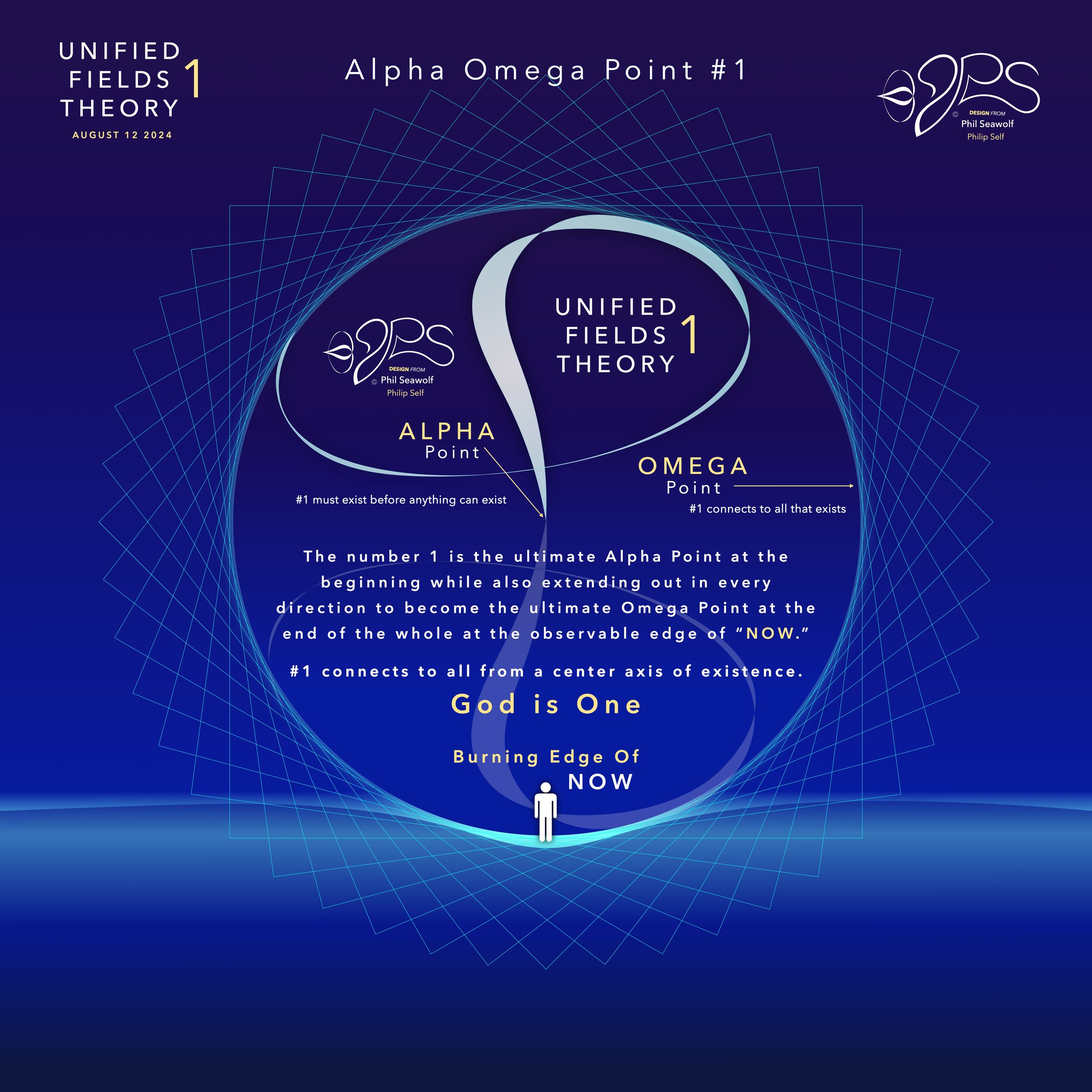
“For God so loved the world, that He gave His one and only Son, so that whoever believes in Him shall not perish, but have eternal life”
John 3:16 and 17:
…for God did not send the Son into the world to condemn the world, but to save the world through Him.”
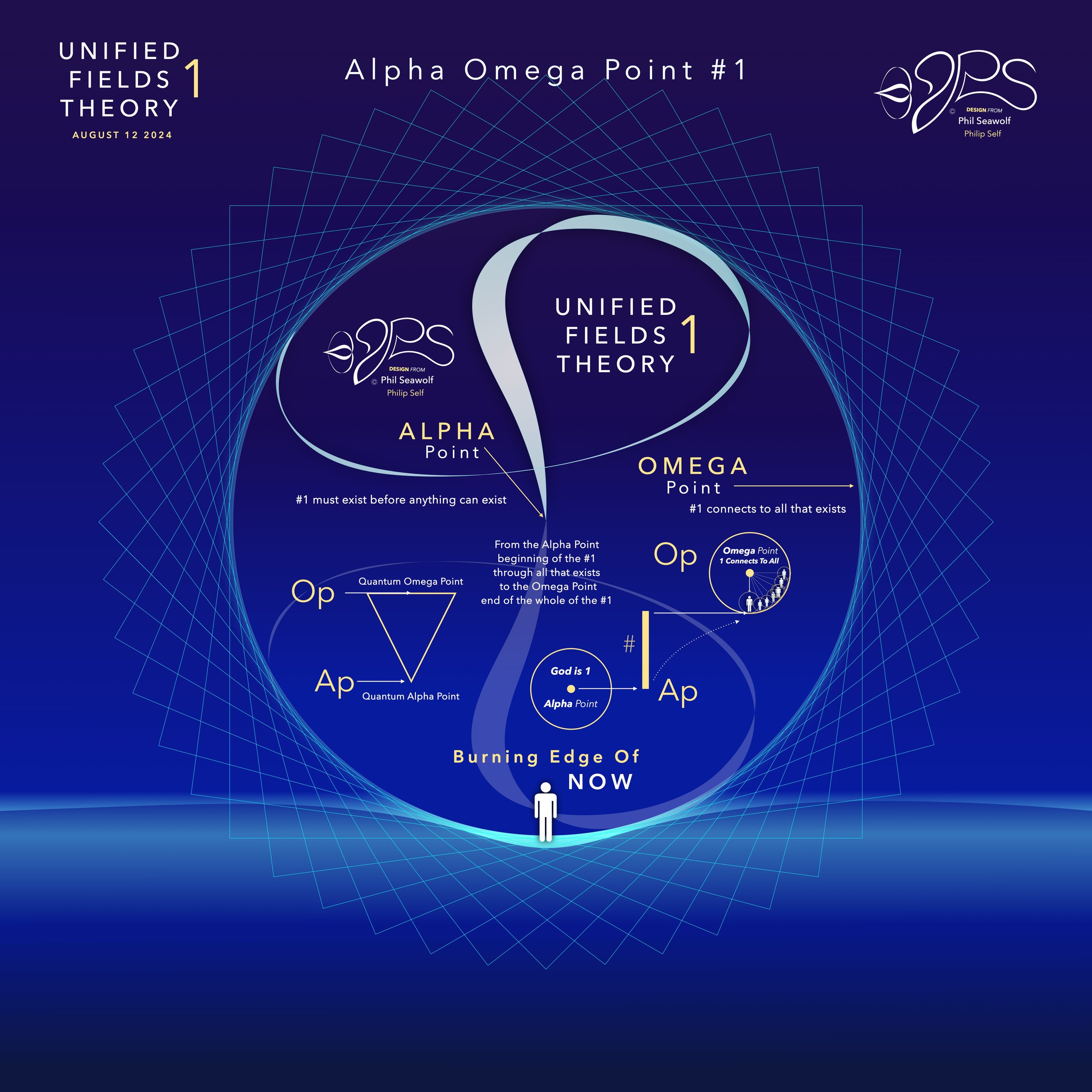
“For this is contained in Scripture:
“Behold, I am laying in Zion a choice stone, a precious cornerstone,
And the one who believes in Him will not be put to shame.”
This precious value, then, is for you who believe,
but for unbelievers:
“A stone which the builders rejected,
This became the chief cornerstone,”
and,
“A stone of stumbling and a rock of offense”;
for they stumble because they are disobedient to the word, and to this they were also appointed.
But you are a chosen people, a royal priesthood, a holy nation, a people for God’s own possession, so that you may proclaim the excellencies of Him who has called you out of darkness into His marvelous light.”
1 Peter 2:6-9
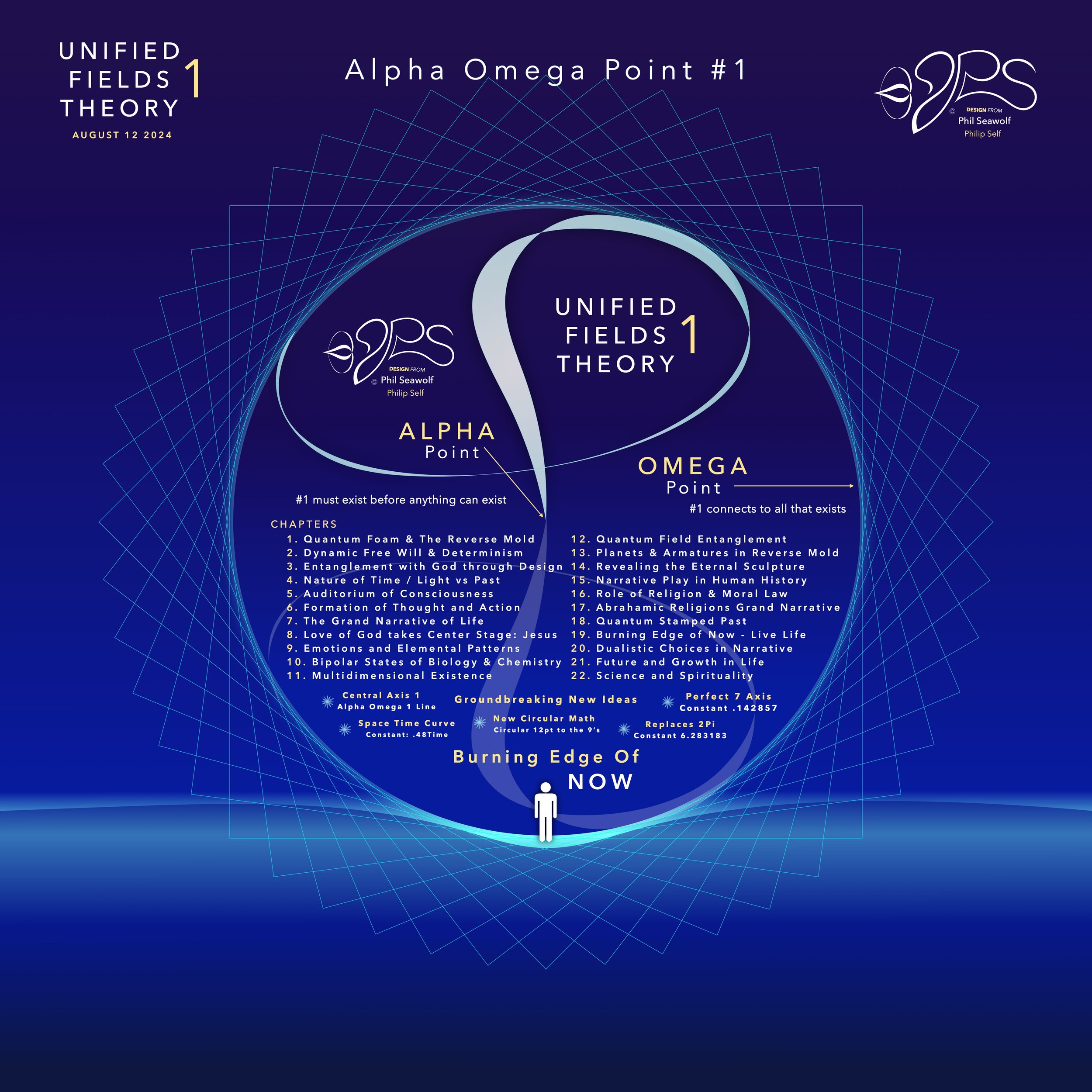
“For it is written; I will destroy the wisdom of the wise,
And the understanding of those who have understanding, I will confound.
Where is the wise person?
Where is the scribe?
Where is the debater of this age?
Has God not made foolish the wisdom of the world?
For since in the wisdom of God
the world through its wisdom did not come to know God,
God was pleased through the foolishness of the message preached to save those who believe.
For indeed Jews ask for signs and Greeks search for wisdom;
but we preach Christ crucified, to Jews a stumbling block, and to Gentiles foolishness,
but to those who are the called, both Jews and Greeks,
Christ the power of God and the wisdom of God.
For the foolishness of God is wiser than mankind,
and the weakness of God is stronger than mankind.”
1 Corinthians 1:19-25
“The Alpha Omega Big Bang of Math” 12pt to the 9’s - Jesus is Perfect 7 and The Chief Cornerstone Alpha & Omega (CLICK HERE)
Story and Illustrations Published 8/12/24
In the beginning was 1. The Big Bang of math. 1 begot 2 and the 2’s had a 3 in 1-2 harmony. Alphabet too… easy as 1 2 3 in 4 parts back in 321 for a perfect 7 harmony. Short story by Phil Seawolf to provide some insight.
Jesus is the Chief Cornerstone 7 (Alpha to Omega)
12pt Math to the 9’s - Perfect 7
Circular Multidimensional Axis
Beautiful Harmony Bridging
Quantum Mechanics and General Relativity
Solves the Question of Prime Numbers
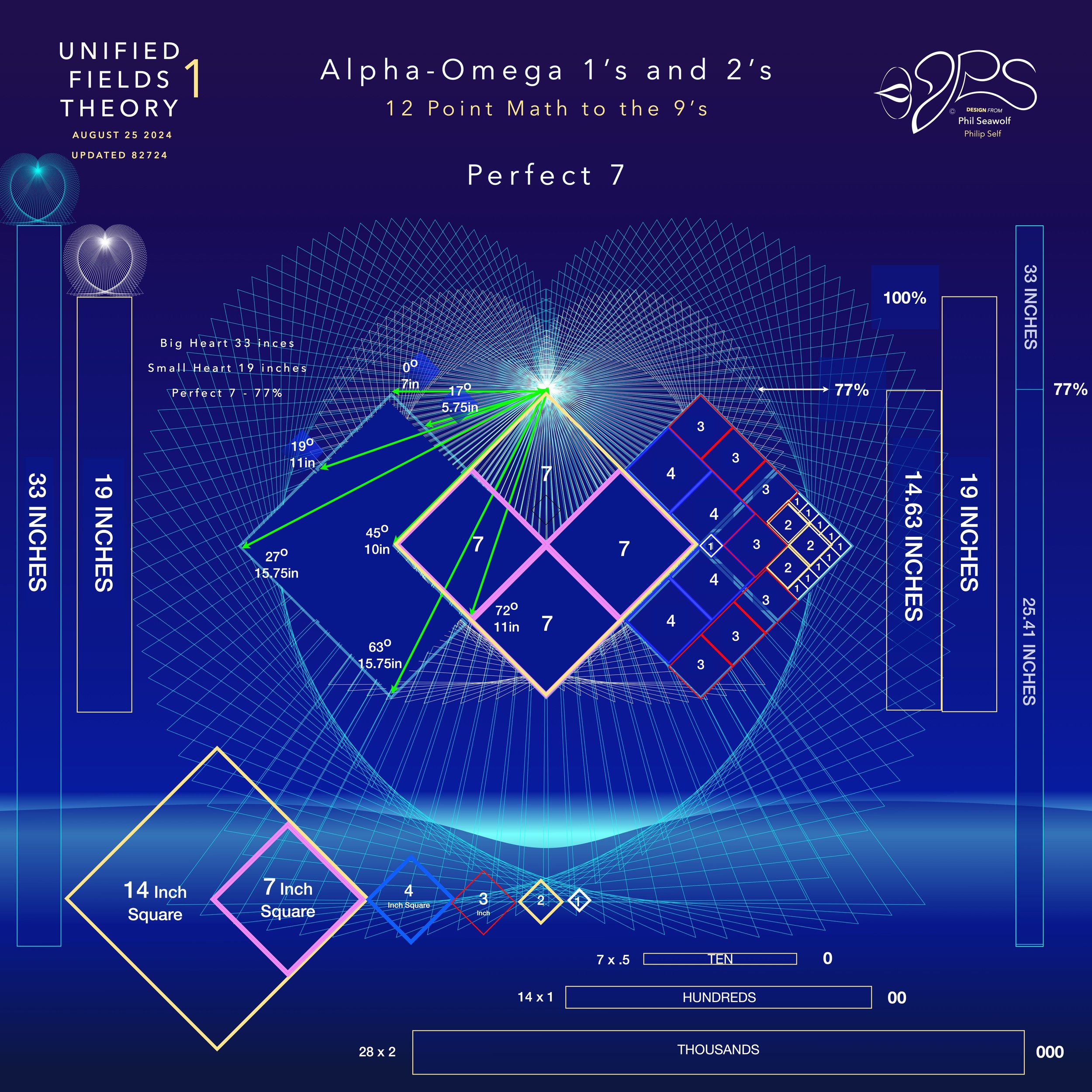
“Alpha Omega Line of 1” PROOF & FORMULAS (CLICK HERE)
